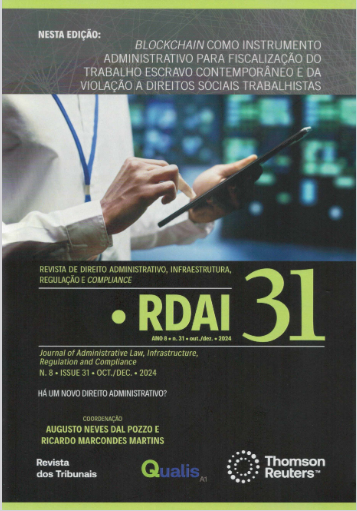Money laundering in international treaties
DOI:
https://doi.org/10.48143/rdai.v8i31.641Keywords:
Financial System, Financial Intelligence, Prevention Regime, Money Laundering, International Treaties, Transnational CrimeAbstract
The money laundering prevention regime is made up of a set of legal provisions of different nature, the classification of the crime, financial entities, vulnerable activities, typologies for laundering money, the competent authorities, their relative powers and attributions. to mitigate and combat this crime, among others, all originated by a set of international instruments signed by the States Parties, whose signatory jurisdictions are obliged to comply with and implement them in accordance with their domestic law, subject to the respective evaluation processes by the organizations. competent international These instruments are the main source from which the measures and actions to prevent, mitigate and combat the transnational crime of money laundering emerged; They also established the main elements to be implemented by the jurisdictions for compliance and effectiveness of said policy; whose purpose is to prevent the proliferation of criminal groups, operations with resources of illicit origin, the continuation of crime, its impunity, insecurity, and the maintenance of criminal organizations; The mitigation of money laundering at a global level is one of the main tasks of criminal policy in countries due to the need to guarantee and protect their security through crime prevention.
Downloads
References
CÓRDOVA GUTIÉRREZ, Alberto. El Lavado de Dinero: Distorsiones Económicas e Implicaciones Sociales. Instituto de Investigación Económica y Social Lucas Alamán, A.C., México, 2001. 118 págs.
DEPARTAMENTO DEL TESORO DE LOS ESTADOS UNIDOS. Prevención del lavado de dinero. Una guía para empresas de servicios monetarios. Estados Unidos de América: Departamento del Tesoro de los Estados Unidos, 2007. 52 págs.
FIGUEROA VELÁZQUEZ, Rogelio Miguel. Enciclopedia Jurídica Mexicana. México: Porrúa, 2002, Tomo F-L. 950 págs.
ORGANIZACIÓN DE LOS ESTADOS AMERICANOS. Combate al lavado de activos desde el sistema judicial. Estados Unidos de América: OEA-Departamento contra la Delincuencia Organizada Transnacional. 2006. 504 págs.
TRIBUNAL SUPREMO DE JUSTICIA DE BOLIVIA. Herramientas para juzgar la legitimación de ganancias ilícitas y el financiamiento al terrorismo. Bolivia: Tribunal Supremo de Justicia, 2023.
2. Hemerografía
CERVANTES VERA, María Angélica. Contexto general de la prevención de lavado de dinero y financiamiento al terrorismo en México. Revista Iuris Tantum. número 32. dic – 2020. p. 67–85, dic 2020. DOI: https://doi.org/10.36105/iut.2020n32.06
3. En línea
Estrategia nacional para la prevención y el combate al lavado de dinero y el financiamiento al terrorismo. Disponible en: http://www.hacienda.gob.mx/inteligencia_financiera/estrategia/estrategia_npcldft_26082010.pdf. Fecha de acceso 19 de mayo de 2024.
Evaluación Nacional de Riesgos de Lavado de Dinero y Financiamiento al Terrorismo en México 2019-2020. Disponible en: https://www.uif.gob.mx/work/models/uif/comunicados/imp/ENR2019-2020.pdf. Fecha de acceso: 19 de mayo de 2024.
Egmont Group of Financial Intelligence Units. Disponible en: https://egmontgroup.org/members-by-region. Fecha de acceso: 19 de mayo de 2024.
Grupo Egmont. Carta del Grupo Egmont de Unidades de Inteligencia Financiera. Disponible en: https://egmontgroup.org/wp-content/uploads/2021/09/Egmont_Group_Charter_-_Revised_September_2018_Spanish.pdf>. Fecha de acceso: 19 de mayo de 2024.
Unidad de Inteligencia Financiera de la Secretaría de Hacienda y Crédito Público. Disponible en: https://www.gob.mx/cms/uploads/attachment/file/425024/PRESENTACION_UIF_GOBMX.pdf. Fecha de acceso: 19 de mayo de 2024.
Downloads
Published
How to Cite
Issue
Section
License
Copyright (c) 2024 Journal of Public Law and Infrastructure | RDAI

This work is licensed under a Creative Commons Attribution-NonCommercial-NoDerivatives 4.0 International License.
This journal is licensed by (CC BY-NC-ND)
Submission and publication of articles are free; peer-reviewed; the journal uses CrossCheck (anti-plagiarism); and complies with the COPE Editors' Guide; Committee on Publication Ethics, in addition to the Elsevier and SciELO recommendations.
Check the Rules for the submission and evaluation of the RDAI.





